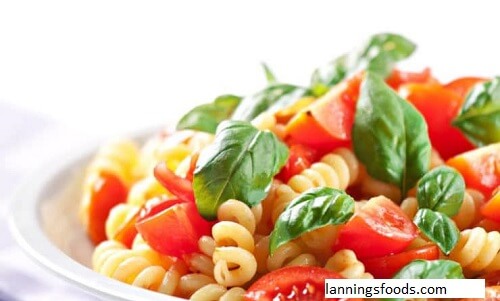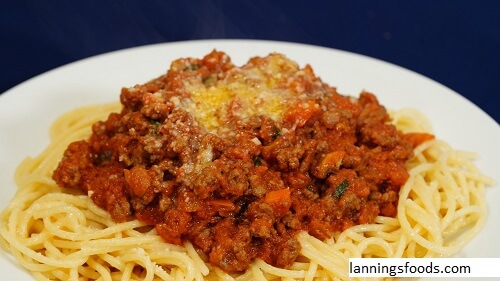Pasta Recipes from History: A Culinary Journey Through Time
Recipes:
Pasta is the most beloved staple in the global cuisine. It has a rich and diverse history that dates back thousands of years, reflecting a tapestry of cultural influences, innovations, and regional adaptations. This article will trace the origins of pasta, highlight notable recipes through history, and glimpse how these traditional dishes have influenced modern cuisine.

The Origin of Pasta:
Recipes:
The origin of pasta is as ancient as can be. Despite claims of the invention of pasta from several cultures, its birth traces back to the Italian Etruscan culture around 400 B.C. However, written accounts that trace noodle-like food date as far back as 3000 B.C. in ancient China with the use of millet dough in writing.
By the Middle Ages, pasta started to take shape in Europe, especially in Italy. The introduction of durum wheat, which was well-suited for making pasta, was a significant development. Then came the production of all the different shapes and varieties, which allowed for the very diverse pasta dishes we love today.
Historical Pasta Recipes:
Recipes:
1. Pasta alla Puttanesca:
- Origin: Naples, Italy, mid-20th century
Ingredients:
- Spaghetti
- Olive oil
- Garlic
- Anchovies
- Capers
- Olives (black or green)
- Crushed tomatoes
- Parsley
- Red pepper flakes
Instructions:
- Boil salted water, cooking spaghetti until al dente. Reserve pasta water before removing and setting the spaghetti aside.
- Heat olive oil in a pan over medium. Toss in minced garlic and anchovies and cook till fragrant.
- Add in capers and olives, and sauté a little longer.
- Add in crushed tomatoes, and allow it to simmer for ten minutes. Season with salt, ground black pepper, and crushed red pepper flakes.
- Toss the cooked spaghetti in the sauce, incorporating a little of the pasta water until it reaches a thick sauce consistency. Sprinkle the chopped parsley over it
Background History: The claim that this recipe was invented at least during the 1950s is based upon one of the numerous rumors which surround the birth and actual story behind this dish.
2. Lasagna:
- Origin: Ancient Rome
Ingredients:
- Lasagna noodles
- Ricotta cheese
- Mozzarella cheese
- Parmesan cheese
- Meat (beef or pork or mix)
- Marinara sauce
- Eggs
- Herbs: basil, oregano
Instructions:
- Preheat oven to 375°F (190°C).
- Browning ground meat in a skillet. Drain excess fat. Add marinara sauce to it.
- Mix in a bowl ricotta cheese, egg, and herbs.
- Layer noodles, meat sauce, ricotta mixture, and mozzarella in a baking dish. Repeat layers, and put mozzarella and Parmesan at the top.
- Put inside the oven for 45 minutes or until bubbly golden.
Historical Note: Lasagna comes from ancient Rome. The ancient version was layers of dough stuffed with meat and sauce. The recipe evolved until it became a popular dish in Italy.
3. Fettuccine Alfredo:
- Country of Origin: Rome, Italy, early 20th century

Ingredients:
- Fettuccine
- Butter
- Heavy cream
- Parmesan cheese
- Black pepper
How to cook it:
- Cook fettuccine in salted water until al dente. Drain, reserving some pasta water.
- In a pan, melt butter over medium heat. Pour in the cream and simmer for a few minutes.
- Stir in grated Parmesan cheese until smooth. Add the reserved pasta water if you need to.
- Toss the fettuccine in the sauce, coating completely. Season with black pepper and serve.
Historical Note: This rich dish was created by Alfredo di Lelio in the early 1900s. It became popular amongst American tourists and has become a classic in Italian-American cuisine.
4. Carbonara:
- Origin: Rome, Italy, mid-20th century
Ingredients:
- Spaghetti
- Pancetta or guanciale
- Eggs
- Pecorino Romano cheese
- Black pepper
Instructions:
- Cook the spaghetti al dente, keeping some pasta water aside.
- Pan-fry pancetta until crispy.
- Beat the eggs and cheese together in a bowl.
- Toss cooked spaghetti with pancetta along with its fat. Instantly add the egg-cheese mixture. Add a bit of pasta water in case you want a silky smooth texture.
- Serve straight away, topped with a little more cheese and pepper.
Historical Note: Carbonara is believed to have been conceived in the Second World War, from rations of eggs, cheese, and cured meat. Since then, it has become an iconic dish of Rome.
5. Pasta e Fagioli:
- Origin: Italy, peasant dish
Ingredients:
- Ditalini or other small pasta
- Cannellini beans
- Olive oil
- Onion
- Garlic
- Carrot
- Celery
- Vegetable broth
- Herbs (thyme, rosemary)
Instructions:
- Heat olive oil in a pot. Sauté chopped onion, garlic, carrot, and celery until soft.
- Add cannellini beans and vegetable broth. Bring to a boil.
- Add the pasta and cook until al dente.
- Season with herbs and serve hot.
Historical Note: This is a peasant dish made out of leftover pasta and beans. It is simple yet nourishing, and that is why it has remained a favorite in Italian homes.
The History of Pasta:
Recipes:
- As pasta spread throughout the world, it would take on the flavors of the local cuisine and ingredients. Italian immigrants popularized pasta dishes in the United States, creating spaghetti and meatballs, not a traditional combination in Italy, but quintessentially American.
- In the post-war era, pasta varieties exploded, stuffing pasta like ravioli and tortellini, whose popularity arose because of versatility and the possibility of offering various content.
More Recent Influences and Fusion:
Recipes:
- Pasta has been evolving today in consideration of globalization and the advances in dietary trends. Different kinds of pasta that would not contain gluten have evolved, and alternative grains including vegetable-based kinds of pasta continue to be popular because each serves a different need based on diet.
- Examples and fusion dishes such as Asian-based pasta using soba noodles cooked with stir-fried vegetables can be seen and tell how pasta can adapt to these different flavors from all directions.
FAQs:
Recipes:
1. Where was pasta born?
The origin of pasta traces its history back to ancient civilizations. There is documentation of its use in Chinese and Etruscan cultures. It gained much popularity in Italy, especially during the Middle Ages.
2. What are the various popular types of pasta?
Some of the most common varieties include the use of spaghetti, fettuccine, penne, rigatoni, and ravioli. Each variety has its texture and accompanies different sauces.
3. Is pasta a healthy food?
Pasta can be part of a healthy diet when served in small quantities. Whole grain and vegetable-based pastas add even more fiber and nutrients to your diet.
4. How to cook pasta?
To cook pasta al dente, cook it in lots of salted boiling water, reserving some of the pasta water for adding to sauce to achieve just-right cooked pasta.
5. Can pasta be made at home?
Yes! Fresh pasta can be prepared using just flour and eggs (or with water for eggless pasta). It’s a rewarding process that also allows for varying degrees of thickness and shapes.
Conclusion:
Recipes:

Pasta is a history of cultural exchange, innovation, and adaptation. From its simple beginning to its spread to every kitchen around the world, pasta recipes are evidence of changing landscapes in culinary traditions. While enjoying such old favorites as spaghetti carbonara or pasta alla puttanesca, we are, at the same time, honoring the rich history that shaped these beloved recipes.
Pasta will always be magnificent in its everyday goodness, reminding us all that by any era, this food will always find a place on our tables.